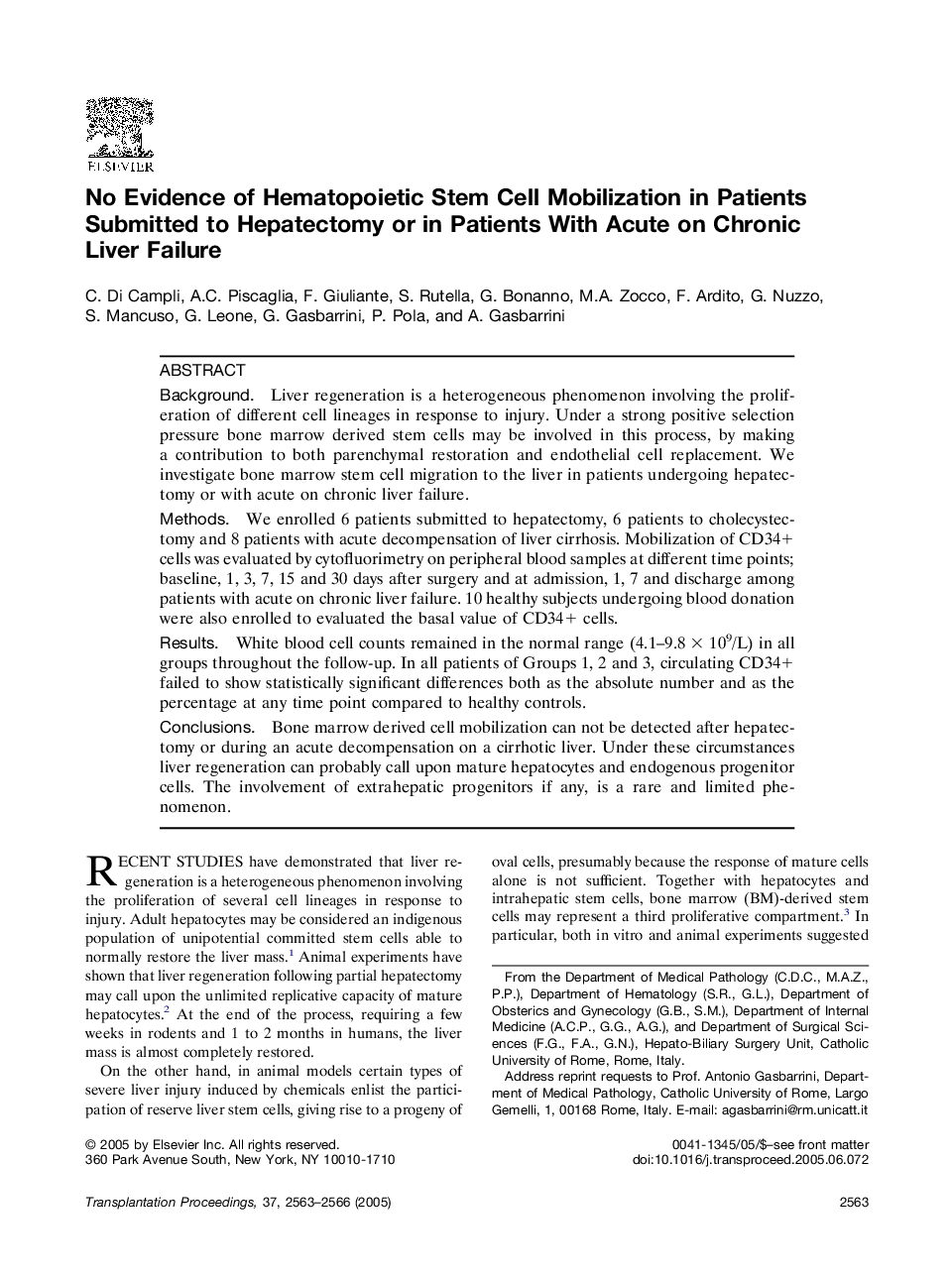| Article ID | Journal | Published Year | Pages | File Type |
|---|---|---|---|---|
| 4263650 | Transplantation Proceedings | 2005 | 4 Pages |
BackgroundLiver regeneration is a heterogeneous phenomenon involving the proliferation of different cell lineages in response to injury. Under a strong positive selection pressure bone marrow derived stem cells may be involved in this process, by making a contribution to both parenchymal restoration and endothelial cell replacement. We investigate bone marrow stem cell migration to the liver in patients undergoing hepatectomy or with acute on chronic liver failure.MethodsWe enrolled 6 patients submitted to hepatectomy, 6 patients to cholecystectomy and 8 patients with acute decompensation of liver cirrhosis. Mobilization of CD34+ cells was evaluated by cytofluorimetry on peripheral blood samples at different time points; baseline, 1, 3, 7, 15 and 30 days after surgery and at admission, 1, 7 and discharge among patients with acute on chronic liver failure. 10 healthy subjects undergoing blood donation were also enrolled to evaluated the basal value of CD34+ cells.ResultsWhite blood cell counts remained in the normal range (4.1–9.8 × 109/L) in all groups throughout the follow-up. In all patients of Groups 1, 2 and 3, circulating CD34+ failed to show statistically significant differences both as the absolute number and as the percentage at any time point compared to healthy controls.ConclusionsBone marrow derived cell mobilization can not be detected after hepatectomy or during an acute decompensation on a cirrhotic liver. Under these circumstances liver regeneration can probably call upon mature hepatocytes and endogenous progenitor cells. The involvement of extrahepatic progenitors if any, is a rare and limited phenomenon.
